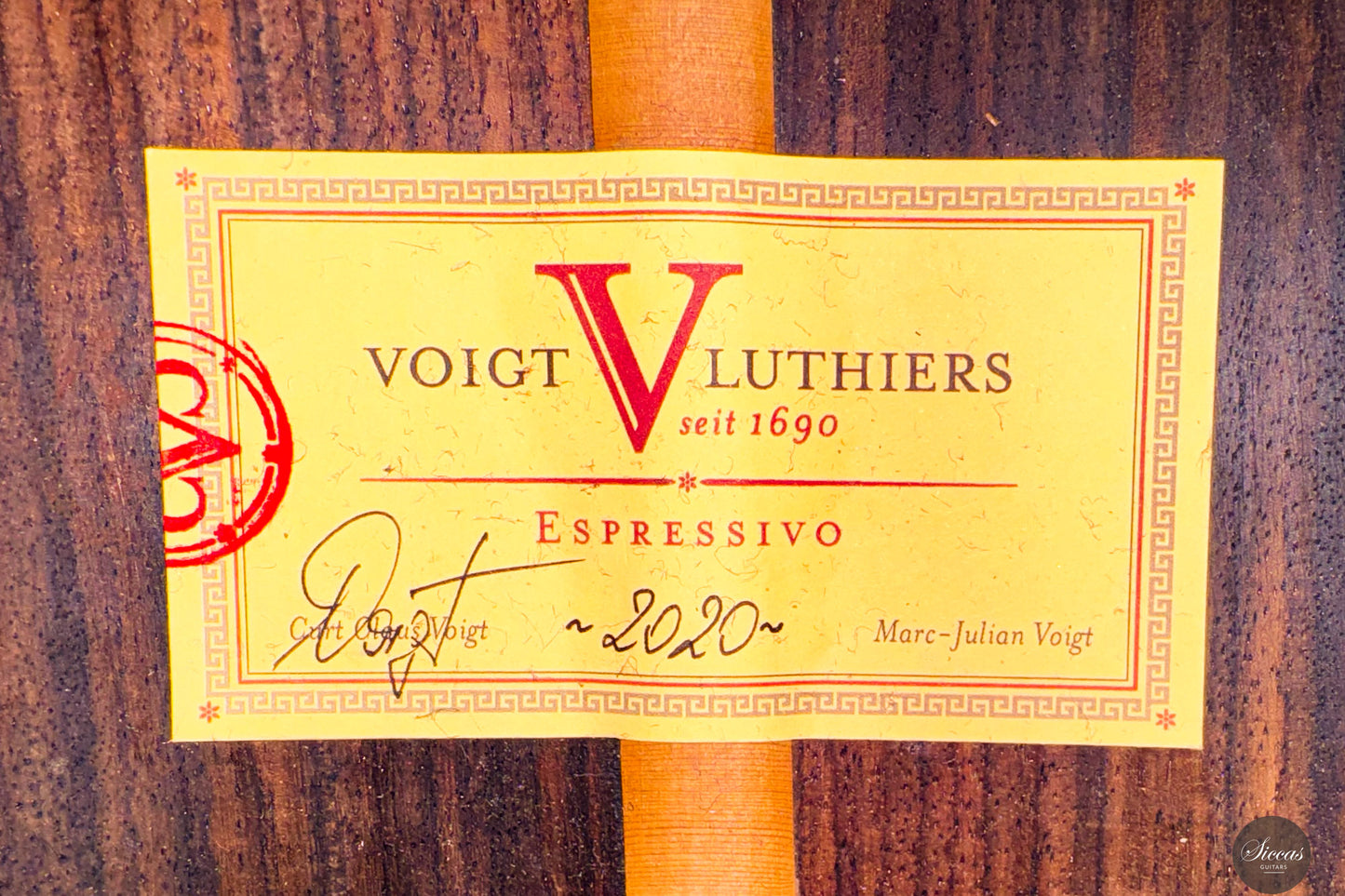Curt Claus Voigt - 2020 - Espressivo
Curt Claus Voigt - 2020 - Espressivo
Details
Details
Overview
Overview
Shipping important note
Shipping important note
Delivery times are typically reliable and most instruments arrive within the estimated timeframe.
Should any unexpected delay occur, our team will keep you informed and provide support at every step. For all shipping details and exceptions, please see our Shipping Policy.
Details about GPSR
Details about GPSR

























Video overview


More details about the guitar
About the luthier
Curt Claus Voigt’s career spans decades of craftsmanship and study, rooted in a rich family tradition of luthiery. He began his apprenticeship in Markneukirchen at the Marma, Karl Bauer KG workshop, a small company known for building a wide variety of plucked string instruments. Trained by his grandfather Kurt Voigt, his father Günter Voigt, and master violin maker Hans Zölch, Curt Claus developed a deep understanding of both traditional and historical instruments. He passed his master’s examination in 1980 and went on to work as a restorer for several renowned museums and private collections. In 1988, he took over the family workshop, Kurt Voigt & Sohn, and relocated it to Wasserburg am Inn, Upper Bavaria. His continuing education includes masterclasses with José Romanillos and extensive study of historic guitars across Europe. Today, Curt Claus Voigt is celebrated for instruments that combine historical knowledge with innovative features, all crafted with exceptional precision and artistic care.About the guitar
This 2020 “Espressivo” model is an outstanding example of Voigt’s philosophy: expressive sound, and playability. It features a spruce top paired with Indian rosewood back and sides, all finished in high-quality French polish. This model is built using a lightweight lattice bracing system, enhancing the top’s responsiveness and balance across all registers. The instrument incorporates several advanced design features, including an elevated fingerboard for improved access to higher frets, a sound port in the upper bout for enhanced player feedback, and a fluidly arched back that contributes to its outstanding projection and tonal complexity. The zero fret, a nod to traditional German guitar building, supports a smooth transition between open and fretted notes, contributing to the guitar’s even tonal quality.Condition
As a pre-loved instrument, this guitar has been well maintained and is in excellent condition, showing only minor signs of normal use.<Regular care extends the life of the instrument
Even with careful use, a classical guitar may gradually change in appearance or respond to unstable storage conditions. Have a close look at your guitar regularly and be attentif to changes. If your instrument is suffering from its environement, it will let you know.
Protect Your Guitar: Handle with Care
Be mindful when touching your instrument with greasy or unwashed hands: any skin contact is a small attack on the varnish. Of course, a guitar is made to be played, but taking a few precautions helps preserve its beauty: wash your hands before playing, wear long sleeves, and avoid unnecessary direct skin contact with the body of the instrument.
Pro tip: Avoid playing with a button-up shirt, heavy jewelry, or a belt, as these can scratch the guitar. Also, make sure your guitar case is free of any objects that could damage the instrument during storage.
String care
A good habit to adopt is wiping down your strings briefly after each playing session. This small action significantly extends their lifespan and helps maintain a consistent, comfortable feel under your fingers.
Most importantly, clean strings are essential for keeping your instrument in tune. Corrosion, sweat, and dust can affect the uniformity of the strings and interfere with accurate tuning across the entire fingerboard.
Pro tip: If you're having trouble getting your guitar in tune, it might be time to change the strings. A useful test is to compare the pitch of the 12th fret harmonic with the fretted note at the 12th fret; if there's an unusually large gap between them, your strings may have lost their integrity and should be replaced.
Keep Your Shellac Finish Shining!
Got a guitar with a shellac (French polish) finish? Here's a simple trick: Take a clean microfiber cloth and gently breathe on the surface to create a light mist. Then, softly rub to remove fingerprints, sweat, and grease. That’s usually all it takes to keep it looking great, no products needed!
Pro tip: Every few years, treat your guitar to a check-up with a luthier to keep it in top shape.
Storing Your Guitar: Climate Matters
Your guitar can safely stay outside its case, as long as the surrounding environment maintains 42–55% humidity and a temperature between 18–25°C.
Keep in mind that humidity levels can still fluctuate inside the case, especially during seasonal changes.
- Too much humidity may cause overtightened strings and a dull tone.
- Too little humidity can lead to a bulging top, string buzz, or even cracks.
Avoid placing your guitar near radiators, air conditioners, or windows with direct sunlight.
Pro tip: Always close your guitar case while playing. This helps preserve a stable microclimate inside the case, so your instrument is protected the moment you put it back in.





















































